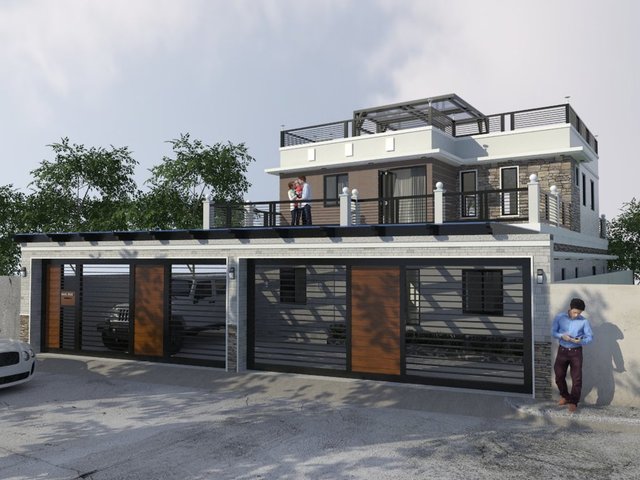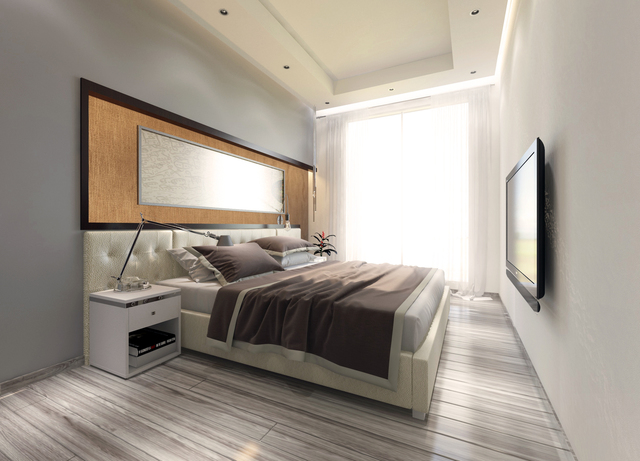Most of the architectural design services process includes sitting in front of a computer—or even with a sketch pad—and trying new things until something looks right. It’s one of the most time-intensive parts of the design, and it’s limited to the imagination of the architect and the safety of the design. However, even the most creative architects are limited in the range of their knowledge and ideas. That’s why a new idea is sweeping around the architectural world, with great potential when it comes down to construction.
Instead of sitting with a sketch pad and coming up with idea after idea, architects can use a computer to assist them in the design. By giving the computer specific constraints and letting it do the bulk of the work, they can quickly check thousands of different design options. For example, a 3D visualizer service can have a rough idea of what they want and use specific parameters to find the best design.
Instead of simply building a shopping mall and coming up with great designs to control shoppers’ flow, an architect can ask a computer to look for optimal flow and immediately get the best solution to look over. Another example might be a roller coaster. Many conditions need to be met for a roller coaster to be both fun and safe, but with the help of generative design, constraints for safety can be met while the architect is free to think about fun instead.
Turning buildings into living organisms
It isn’t just simple things like flow and safety that can be met through generative design. This relatively new concept has a lot to offer the creative architect. Through generative design, buildings could become more like a living organism rather than a simple structure. By putting the position of the building and solar data into generative design as the constraints, it’s possible to develop a window that provides optimal lighting without the use of blinds or curtains. Plumbing and other essential lines could be woven together into the same skin, acting more like veins than layers of piping.
Generative architecture can help architectural 3D modeling services quickly explore concepts like this by using algorithms to remove dead-ends from possible outcomes quickly. Although the idea of a building like this might seem a bit futuristic, the possibilities from generative architecture are currently just scratching the surface. As architects utilize generative architecture, we will likely start to see buildings with these dazzling possibilities appear.
The history of generative architecture
Generative architecture is still very new, but in the past, other computer-aided techniques in the architectural sphere were also very new. At one point, architects used a new tool known as ‘scripting’ to help with the builds’ basic geometry. Rather than spend hours and hours slogging through geometry to ensure a strong build, they let a computer do repetitive tasks. This allowed the architect to focus more on the creative side while ensuring no mistakes were made.

Using scripting helped speed up the process of creating new buildings while making them safer. Computers don’t make mistakes, so using this new technology helped ensure that even a creative design would be able to withstand the elements and the weight of the structure itself. Generative architecture is the next step on this road. The process still leaves plenty for an architectural drafting service to do in terms of design but helps narrow down ideas. The result is that an architect doesn’t have to limit themselves to what they can come up with but use a computer to show ideas limited by the architect’s specifications.
A practical solution for real-world problems
A skyscraper is a very common sight in cities, but the elements they face are very different. The buildings in Chicago face high winds, whereas earthquakes are a serious problem in Japan. Each building needs to be made safe against these elements, while the client and the architect usually want their building to be special in some way. Generative architecture helps by allowing architects to define necessary parameters and then exploring options from there. However, a building that can hold up to the elements while still being unique isn’t the only application.
Brazilian architect Guto Requena, for example, used generative architecture to create stools for a bar that matched the rhythm of popular music in the area. The stools were then 3D printed. This is an example of generative architecture with particular and narrow parameters, but it can also be used with more general parameters. They can be used to make the strongest possible bridge with the cheapest possible materials, or by using people’s natural flow and building an entire school around how people like to walk.
This was taken a step further by the creators of AutoDesk. When their new offices were built, they took the opinions of the people who would work in the buildings and used them as some of the design parameters. The result was a building customized to the workflows of the people who would use the building.
Many times, architectural planning services are called back after creating the building because it becomes apparent that the way the building is laid out does not work for the people in them. By speaking with the people in the office before construction, they created a refined building that worked for the team that was using it.
Taking repetition out of design
Although generative architecture is used most frequently in situations where organic solutions are needed, it can also be used to take the monotony out of design. No matter how unique a construction site is, there are always aspects of design that are repetitive but necessary. Generative architecture can handle these by taking the layout of a future development, for example, and showing different options for how the development can be built using local laws and street layouts as the limitations.
Having the scripting handle the regulations that must be followed leaves the architectural team free to look at the available designs and choose the best one. With everything else accounted for, including details like weather and the direction the development needs to face, BIM modeling services can choose the design that works best without worrying they’ve missed something critical.
Speeding up the process of design
It takes time to think over different solutions and arrive at the best conclusion. An architect may come up with five or six design options before deciding on the best one, and there is a significant amount of time that goes into this stage. Generative architecture excels at speeding up this process. In one example, a liquor store in the Netherlands needed a remodel but couldn’t afford to stay closed for the time needed. The architectural site plan design service used generative architecture to arrive at 40 different possible designs—in about 15 minutes.

They were then able to arrive at the best design out of these options relatively quickly, especially compared to how long it would normally take. This was a massive burden on both the architects and the store owners, who could be back in business quickly thanks to this technology.
Not only does this help get the business up fast, but the quality is still the same. Generative design considers the need for storage space, the ability to see the customers at all times from the counter, and as much shelving as possible, all while creating a beautiful design. With the help of generative architecture, the best design can be found very quickly.
Possibilities outside of design
It’s not just architectural design that can benefit from generative architecture. The entire construction process can use this tool to help them create the building as efficiently as possible. Dieter Vermeulen performed a study using generative architecture called Crane Position Optimization. As you might guess from the name, the study involved using the same scripts involved in design to find the best strategy for positioning a crane to create the building. The script can try every angle for moving the crane and automatically find the best solution for getting the building completed as efficiently as possible. Although this isn’t technically architecture, it does show the flexibility of these scripts.
Conclusion
Generative architecture is the future of architecture itself. Just as the first scripts helped take the work out of repetitive aspects of design, generative architecture is here to improve designers’ ability to create the best designs. If you’re an architect and not yet familiar with generative architecture, it may be worth it to try experimenting with these scripts. You can save time, money, and achieve the same or better results during your creative process with them.
And if you’re in the market to hire an architect who’s an expert in generative architecture, let us help. At Cad Crowd, we have a network of the best CAD services and architectural freelancers ready to help with any project. Get a free quote today.
